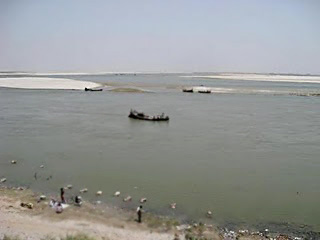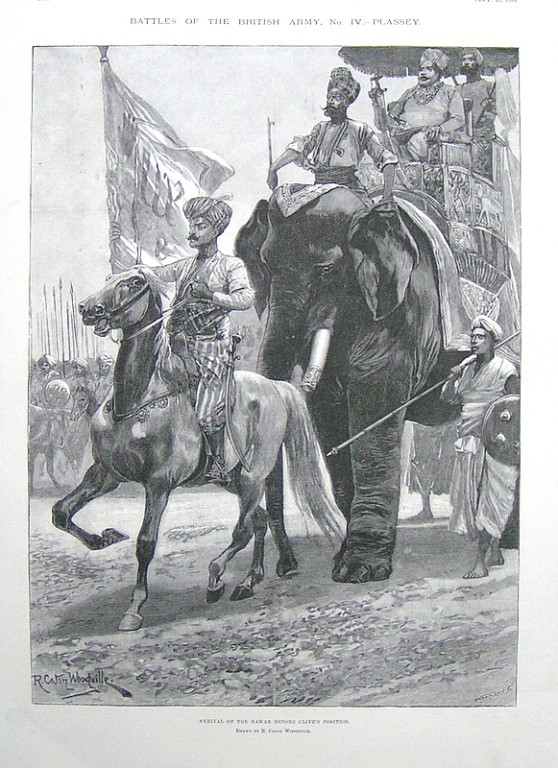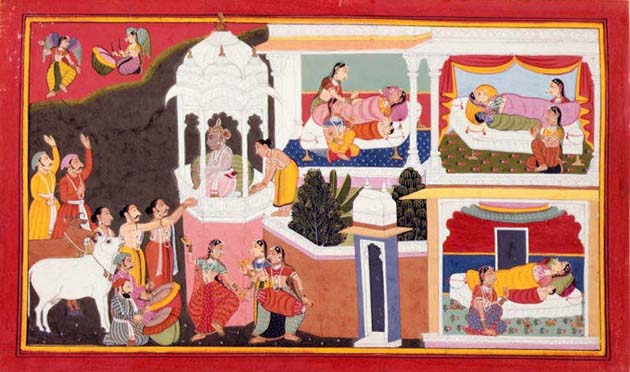|
Kastaharni Ghat
Kastaharni Ghat is a '' ghat'' or bathing place on the River Ganges, at Munger in the Indian state of Bihar. History In the sixth century CE, a Hindu sage named Mudgal Muni appeared in the city and established two shrines, one at a rock at Kashtaharini Ghat. In the 26th Adhyaya (chapter) of Adi Kanda of the Valmiki Ramayana, it is mentioned that both Lord Rama and his brother Lakshmana on their way back from the encounter with Taraka, the demoness, took rest at the spot. The relaxation they had given rise to the name of Kashtaharini Ghat. According to another account it was on his return journey from Mithila to Ayodhya after marrying Sita that Lord Rama bathed at this place to relieve himself from fatigue. A copper plate known as the 'Munger Plate' was discovered in Munger in 1780. Mir Kasim conquered Munger and made it his capital till the army of the East India Company captured Munger. Religious significance According to Hindu folklore, one who takes a dip in this gh ... [...More Info...] [...Related Items...] OR: [Wikipedia] [Google] [Baidu] |
India
India, officially the Republic of India ( Hindi: ), is a country in South Asia. It is the seventh-largest country by area, the second-most populous country, and the most populous democracy in the world. Bounded by the Indian Ocean on the south, the Arabian Sea on the southwest, and the Bay of Bengal on the southeast, it shares land borders with Pakistan to the west; China, Nepal, and Bhutan to the north; and Bangladesh and Myanmar to the east. In the Indian Ocean, India is in the vicinity of Sri Lanka and the Maldives; its Andaman and Nicobar Islands share a maritime border with Thailand, Myanmar, and Indonesia. Modern humans arrived on the Indian subcontinent from Africa no later than 55,000 years ago., "Y-Chromosome and Mt-DNA data support the colonization of South Asia by modern humans originating in Africa. ... Coalescence dates for most non-European populations average to between 73–55 ka.", "Modern human beings—''Homo sapiens''—originated in Africa. Th ... [...More Info...] [...Related Items...] OR: [Wikipedia] [Google] [Baidu] |
Tataka
Tāṭakā is a minor ''yakṣī'' antagonist in the ''Rāmāyaṇa''. Along with her children, Mārīca and Subāhu, Tāṭakā would harass and attack sages performing yajñas in the forest. They were ultimately slain by Rāma and Lakṣmaṇa on behest of their teacher, Viśvāmitra Vishvamitra ( sa, विश्वामित्र, ) is one of the most venerated rishis or sages of ancient India. According to Hindu tradition, he is stated to have written most of the Mandala 3 of the Rigveda, including the Gayatri Mantr .... ''Rāmāyaṇa'' In the ''Rāmāyaṇa'', the Viśvāmitra tells Rama and Lakṣmana the story of Tāṭakā when they reach a forest inhabited by her. Viśvāmitra states that a yakṣa named Suketu had undertaken austerities to obtain children, and was given a daughter with the strength of a thousand elephants named Tāṭakā, but not a son. When she became of age, she was married to Sunda, and gave birth to a son named Mārīca. After Su ... [...More Info...] [...Related Items...] OR: [Wikipedia] [Google] [Baidu] |
Tourist Attractions In Bihar
Tourism is travel for pleasure or business; also the theory and practice of touring, the business of attracting, accommodating, and entertaining tourists, and the business of operating tours. The World Tourism Organization defines tourism more generally, in terms which go "beyond the common perception of tourism as being limited to holiday activity only", as people "travelling to and staying in places outside their usual environment for not more than one consecutive year for leisure and not less than 24 hours, business and other purposes". Tourism can be domestic (within the traveller's own country) or international, and international tourism has both incoming and outgoing implications on a country's balance of payments. Tourism numbers declined as a result of a strong economic slowdown (the late-2000s recession) between the second half of 2008 and the end of 2009, and in consequence of the outbreak of the 2009 H1N1 influenza virus, but slowly recovered until the COVID-19 pa ... [...More Info...] [...Related Items...] OR: [Wikipedia] [Google] [Baidu] |
Munger District
Munger district is one of the thirty-eight districts of Bihar state in eastern India. Munger city is the administrative headquarters of this district. Munger district is a part of Munger Division. Its literacy rate of 73.3% is higher than the state literacy rate of 63.8% and lower than national rate of 74.04. The present collector and District Magistrate of Munger is Navin Kumar, IAS. MP is Rajeev Rajan Singh Urf Lalan Singh History Munger has seen five districts partitioned off from its territory: Begusarai in 1972; Khagaria in 1988; and Jamui in 1991; and Lakhisarai district and Sheikhpura in 1994. Geography Munger District is located in the southern part of Bihar and its headquarters is located on the southern bank of river Ganges. Munger district occupies an area of , Politics Economy In 2006, the Ministry of Panchayati Raj named Munger one of the country's 250 most backward districts (out of a total of 640). It is one of the 36 districts in Bihar have been r ... [...More Info...] [...Related Items...] OR: [Wikipedia] [Google] [Baidu] |
Uttarvahini Ganga
The term ''Uttarvahini Ganga'' is used to refer to places where the Ganges river has a northward flow. For the majority of its route, the Ganges flows in a generally southeasterly direction, from the gangotri glacier to its delta emptying into the Bay of Bengal. However, there are several places where the meandering of the river leads to a northerly flow, which is considered auspicious among Hindus. Significant places of ''Uttarvahini Ganga'' Uttarakhand Haridwar Haridwar is a holy place of Hindus. ‘Hari’ terms belongs to Lord Vishnu and ‘Dwar’ represents door. Also known as Hari Dham. Here Ganga is ''Uttarayan'' for a little. Uttar Pradesh Kashi In Kashi, the Ganges has a more distinct northerly flow than at Haridwar. The Ganges here merges with five more rivers like Varuna and Assi. which is why this place is also known as Varanasi. It is said that Kashi is set on the Trishul of Lord Shiva. Bhriguthaura In Bhriguthaura, the Ganges has a more distinct northerly ... [...More Info...] [...Related Items...] OR: [Wikipedia] [Google] [Baidu] |
East India Company
The East India Company (EIC) was an English, and later British, joint-stock company founded in 1600 and dissolved in 1874. It was formed to trade in the Indian Ocean region, initially with the East Indies (the Indian subcontinent and Southeast Asia), and later with East Asia. The company seized control of large parts of the Indian subcontinent, colonised parts of Southeast Asia and Hong Kong. At its peak, the company was the largest corporation in the world. The EIC had its own armed forces in the form of the company's three Presidency armies, totalling about 260,000 soldiers, twice the size of the British army at the time. The operations of the company had a profound effect on the global balance of trade, almost single-handedly reversing the trend of eastward drain of Western bullion, seen since Roman times. Originally chartered as the "Governor and Company of Merchants of London Trading into the East-Indies", the company rose to account for half of the world's trad ... [...More Info...] [...Related Items...] OR: [Wikipedia] [Google] [Baidu] |
Mir Kasim
Mir Qasim ( bn, মীর কাশিম; died 8 May 1777) was the Nawab of Bengal from 1760 to 1763. He was installed as Nawab with the support of the British East India Company, replacing Mir Jafar, his father-in-law, who had himself been supported earlier by the East India Company after his role in winning the Battle of Plassey for the British. However, Mir Jafar eventually ran into disputes with the East India Company and attempted to form an alliance with the Dutch East India Company instead. The British eventually defeated the Dutch at Chinsura and overthrew Mir Jafar, replacing him with Mir Qasim. Qasim later fell out with the British and fought against them at Buxar. His defeat has been suggested as a key reason in the British becoming the dominant power in large parts of North and East India. Early life and family Sayyid Mir Qasim was the son of Mir Muhammad Razi Khan, and claimed descent from Ali al-Ridha. His paternal grandfather, Sayyid Husayn Ridhwi, entered the M ... [...More Info...] [...Related Items...] OR: [Wikipedia] [Google] [Baidu] |
Sita
Sita (; ) also called as Janaki and Vaidehi is a Hindu goddess and the female protagonist of the Hindu epic, '' Ramayana''. She is the consort of Rama, the avatar of the god Vishnu, and is regarded as a form of Vishnu's consort, Lakshmi. She is also the chief goddess of Rama-centric Hindu traditions. Sita is known for her dedication, self-sacrifice, courage, and purity. She is one of the seventeen national heroes (r''astriya bibhuti'') of Nepal. Described as the daughter of Bhūmi (the earth), Sita is brought up as the adopted daughter of King Janaka of Videha. Sita, in her youth, chooses Rama, the prince of Ayodhya as her husband in a swayamvara. After the swayamvara, she accompanies her husband to his kingdom, but later chooses to accompany her husband, along with her brother-in-law Lakshmana, in his exile. While in exile, the trio settles in the Dandaka forest from where she is abducted by Ravana, the Rakshasa king of Lanka. She is imprisoned in the garden of ... [...More Info...] [...Related Items...] OR: [Wikipedia] [Google] [Baidu] |
Ayodhya
Ayodhya (; ) is a city situated on the banks of holy river Saryu in the Indian state of Uttar Pradesh. Ayodhya, also known as Saketa, is an ancient city of India, the birthplace of Rama and setting of the great epic Ramayana. Ayodhya was once the capital of the ancient Kosala Kingdom. It has an average elevation of 93 meters (305 feet). Owing to the belief as the birthplace of Rama, Ayodhya (Awadhpuri) has been regarded as first one of the seven most important pilgrimage sites (Mokshdayini Sapt Puris) for Hindus. The early Buddhist and Jain canonical texts mention that the religious leaders Gautama Buddha and Mahavira visited and lived in the city. The Jain texts also describe it as the birthplace of five tirthankaras namely, Rishabhanatha, Ajitanatha, Abhinandananatha, Sumatinath and Anantnath, and associate it with the legendary Bharata Chakravarti. From the Gupta period onwards, several sources mention Ayodhya and Saketa as the name of the same city. Owing ... [...More Info...] [...Related Items...] OR: [Wikipedia] [Google] [Baidu] |
Mithila (ancient)
Mithila (), also known as Tirhut, Tirabhukti and Mithilanchal is a geographical and cultural region of the Indian subcontinent bounded by the Mahananda River in the east, the Ganges in the south, the Gandaki River in the west and by the foothills of the Himalayas in the north. It comprises certain parts of Bihar and Jharkhand of India and adjoining districts of the Province No. 1, Bagmati Pradesh and Madhesh Province of Nepal. The native language in Mithila is Maithili, and its speakers are referred to as Maithils. The name Mithila is commonly used to refer to the Videha Kingdom, as well as to the modern-day territories that fall within the ancient boundaries of Videha. Till the 20th century, Mithila was still ruled in part by the Raj Darbhanga. History Vedic period Mithila first gained prominence after being settled by Indo-Aryan peoples, Indo-Aryan peoples who established the Videha kingdom. During the Later Vedic period (c. 1100–500 BCE), Videha became one of the maj ... [...More Info...] [...Related Items...] OR: [Wikipedia] [Google] [Baidu] |
Lakshmana
Lakshmana ( sa, लक्ष्मण, lit=the fortunate one, translit=Lakṣmaṇa), also spelled as Laxmana, is the younger brother of Rama and his loyalist in the Hindu epic ''Ramayana''. He bears the epithets of Saumitra () and Ramanuja (). He is the twin of Shatrughna. Legend Birth and marriage King Dasharatha of Ayodhya had three wives: Kausalya, Kaikeyi, and Sumitra. He performed a sacrifice to beget sons and as a result, his queens became pregnant. Lakshmana and his brother Shatrughna were born to Sumitra, while Rama and Bharata were born to Kausalya and Kaikeyi. In the Puranas, Lakshmana is described as an incarnation of Shesha, the multiple-headed naga (serpent) upon whom rests the preserver deity Vishnu, whose avatar Rama is considered to be. When sage Vishvamitra asked Rama to kill the demons in the forest, Lakshmana accompanied them and went to Mithila with them. Lakshmana was especially attached to Rama. When Rama married Sita, Lakshmana marr ... [...More Info...] [...Related Items...] OR: [Wikipedia] [Google] [Baidu] |






